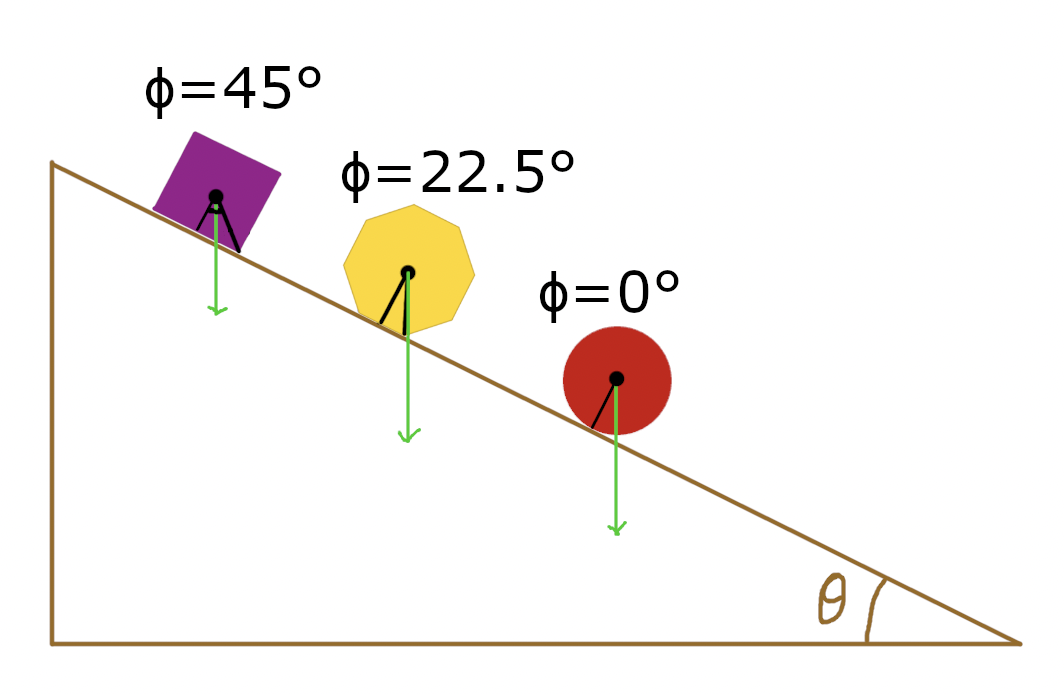There's an interesting subtlety here - the difference between rolling fast and rolling at all.
The second question is easier. For a polygon to roll down the hill, we need two things:
- Static friction strong enough to prevent the square from slipping
- $\theta > \phi$, i.e. the object's center of mass (think of it as the "middle" of an object) is past the furthest corner of the polygon.
Take an assembly of shapes on a hill:
In this situation, the square is stable, the circle is unstable and will roll, while the octagon is just on the verge of moving.
The more difficult question (at least for me) is, "Once rolling, which one accelerates faster?", which was already thoroughly answered in the linked question.
